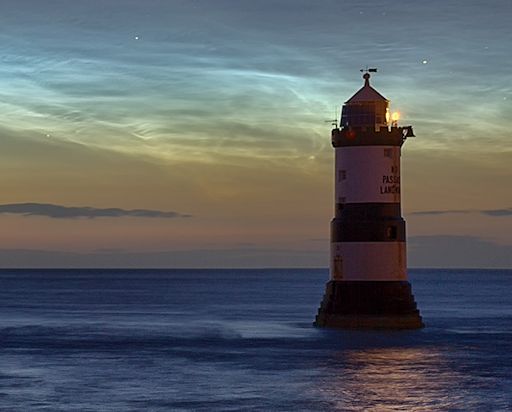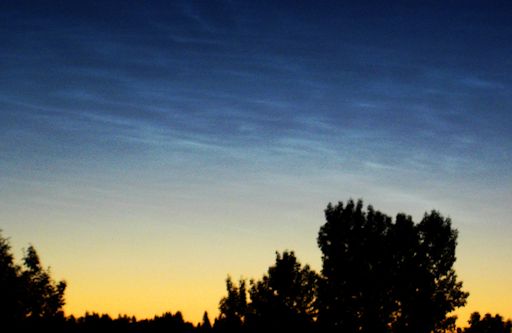| Article Credit: Spaceweather.com
NOCTILUCENT CLOUDS REACH THE USA: For weeks, sky watchers have been reporting noctilucent clouds (NLCs) in the evening skies of Canada and northern Europe. Here they are on June 7th over Penmon Point in Anglesey, Wales:

"The stunning display of noctilucent clouds lasted 4 hours," says photographer Kevin Lewis. "A meteor breaking up in one shot was an added bonus."
The 2015 season for NLCs started on May 19th when NASA's AIM spacecraft spotted a patch of electric blue over the Arctic Circle. Since then, the clouds have been creeping south and, on June 8-9, they crossed the border into the lower 48 US states. "I caught sight of them around 3:45 a.m. local time," reports Dustin Guy, who sends this picture from Seattle, Washington:

"I had to do a double take," says Guy. "It's been awhile since I last saw them!" Electric-blue ripples were also sighted in Polebridge, Montana.
Noctilucent clouds first appeared in the 19th century. At the time, they were a polar phenomenon usually restricted to regions around the Arctic and Antarctic Circles. In recent years, NLCs have intensified and spread with sightings as far south as Utah and Colorado. This could be a sign of increasing greenhouse gases in Earth's atmosphere.
At the moment, NLCs over the USA are little more than wan ripples. As summer unfolds, however, they could turn into something truly bright and eye-catching. Observing tips: Look west 30 to 60 minutes after sunset when the sun has dipped 6o to 16o below the horizon. If you see luminous blue-white tendrils spreading across the sky, you may have spotted a noctilucent cloud. | 